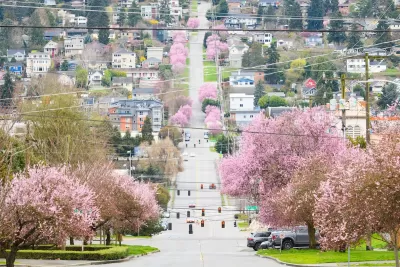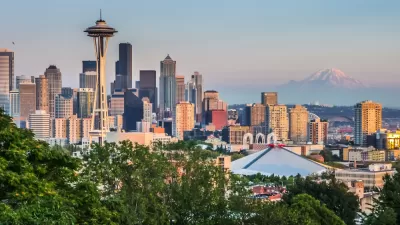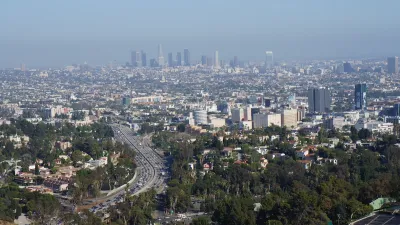Seattle’s goal to cover 30 percent of the city with tree canopy by 2037 doesn’t need to be sacrificed in favor of density. There’s a better way.

Seattle could more easily reach its goal of having 30 percent of the city covered by trees by 2037 by eliminating a third of city-owned parking spaces in favor of trees and plants, writes Ryan DiRaimo in an opinion piece for The Urbanist.
“It’s not as far-fetched as it sounds. Paris has taken on a similar pledge, promising to replace 60,000 parking spots with street trees by 2030. Paris spans just 41 square miles, so the equivalent goal in 84-square-mile Seattle would be double,” DiRaimo adds.
Most of Seattle’s tree canopy loss between 2112 and 2021, according to the Tree Canopy Assessment, has happened in the city’s parks (46 percent) and single-family neighborhoods (35 percent). Just 10 percent of tree loss occurred due to multifamily development.
According to DiRaimo, “Seattle owns more than 15,000 intersections citywide, and 9,600 of them are on quiet, low-traffic streets inside our grid of neighborhoods. If we convert eight parking spaces into trees, build planted curb bulbs and roundabouts with trees, then each intersection can become 17 new trees. Doing this citywide adds nearly 165,000 trees.”
Ultimately, there’s no need to pit density against trees when pavement takes up a third of the city. “We shouldn’t be fighting more housing as we lower emissions, we should encourage it and find solutions that include trees.”
FULL STORY: Op-Ed: Convert Street Parking to Trees to Hit Seattle Canopy Goals Sooner

Alabama: Trump Terminates Settlements for Black Communities Harmed By Raw Sewage
Trump deemed the landmark civil rights agreement “illegal DEI and environmental justice policy.”

Planetizen Federal Action Tracker
A weekly monitor of how Trump’s orders and actions are impacting planners and planning in America.

How Atlanta Built 7,000 Housing Units in 3 Years
The city’s comprehensive, neighborhood-focused housing strategy focuses on identifying properties and land that can be repurposed for housing and encouraging development in underserved neighborhoods.

In Both Crashes and Crime, Public Transportation is Far Safer than Driving
Contrary to popular assumptions, public transportation has far lower crash and crime rates than automobile travel. For safer communities, improve and encourage transit travel.

Report: Zoning Reforms Should Complement Nashville’s Ambitious Transit Plan
Without reform, restrictive zoning codes will limit the impact of the city’s planned transit expansion and could exclude some of the residents who depend on transit the most.

Judge Orders Release of Frozen IRA, IIJA Funding
The decision is a victory for environmental groups who charged that freezing funds for critical infrastructure and disaster response programs caused “real and irreparable harm” to communities.
Urban Design for Planners 1: Software Tools
This six-course series explores essential urban design concepts using open source software and equips planners with the tools they need to participate fully in the urban design process.
Planning for Universal Design
Learn the tools for implementing Universal Design in planning regulations.
Jessamine County Fiscal Court
Caltrans
Institute for Housing and Urban Development Studies (IHS)
City of Grandview
Harvard GSD Executive Education
Toledo-Lucas County Plan Commissions
Salt Lake City
NYU Wagner Graduate School of Public Service





























